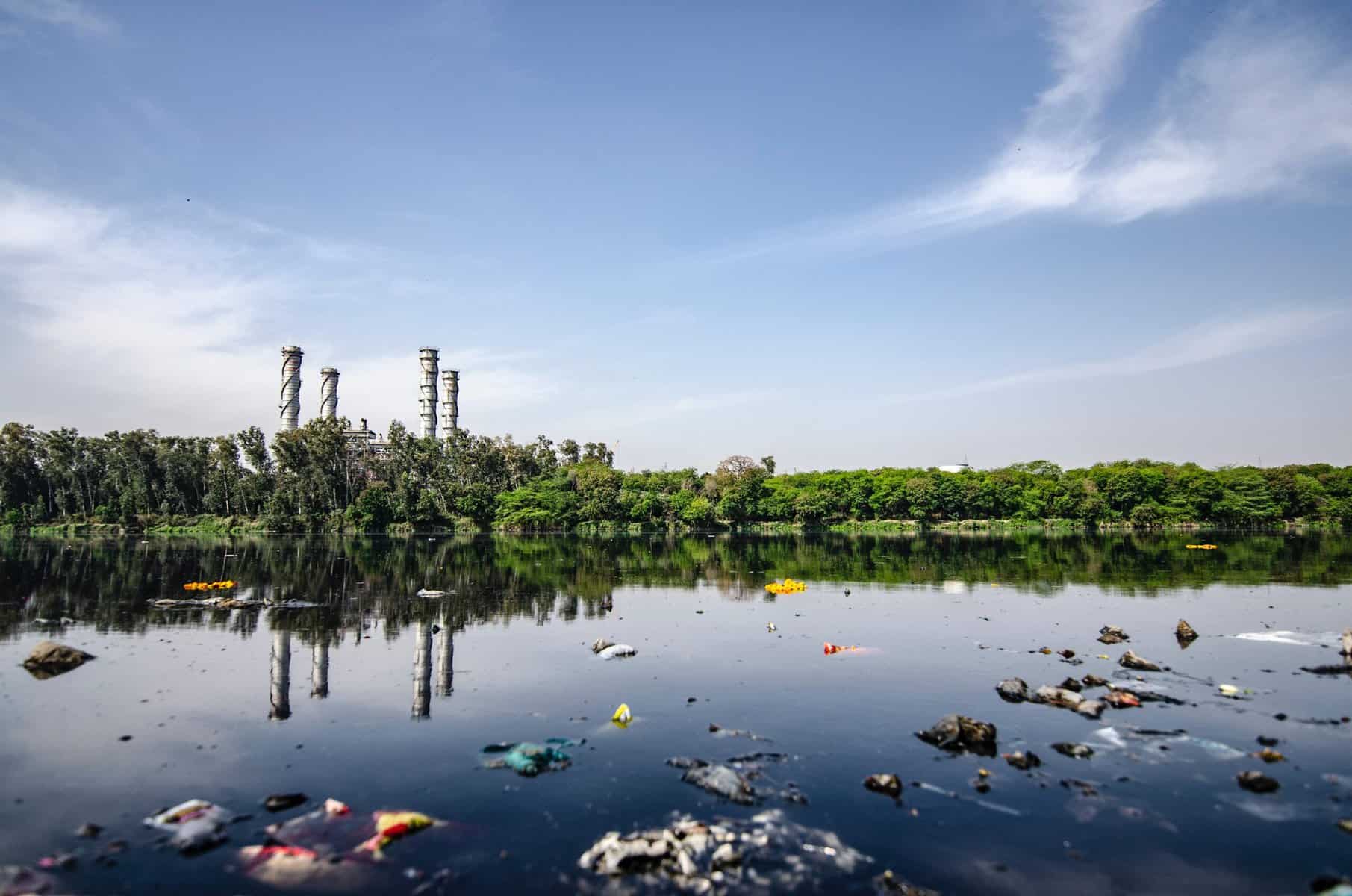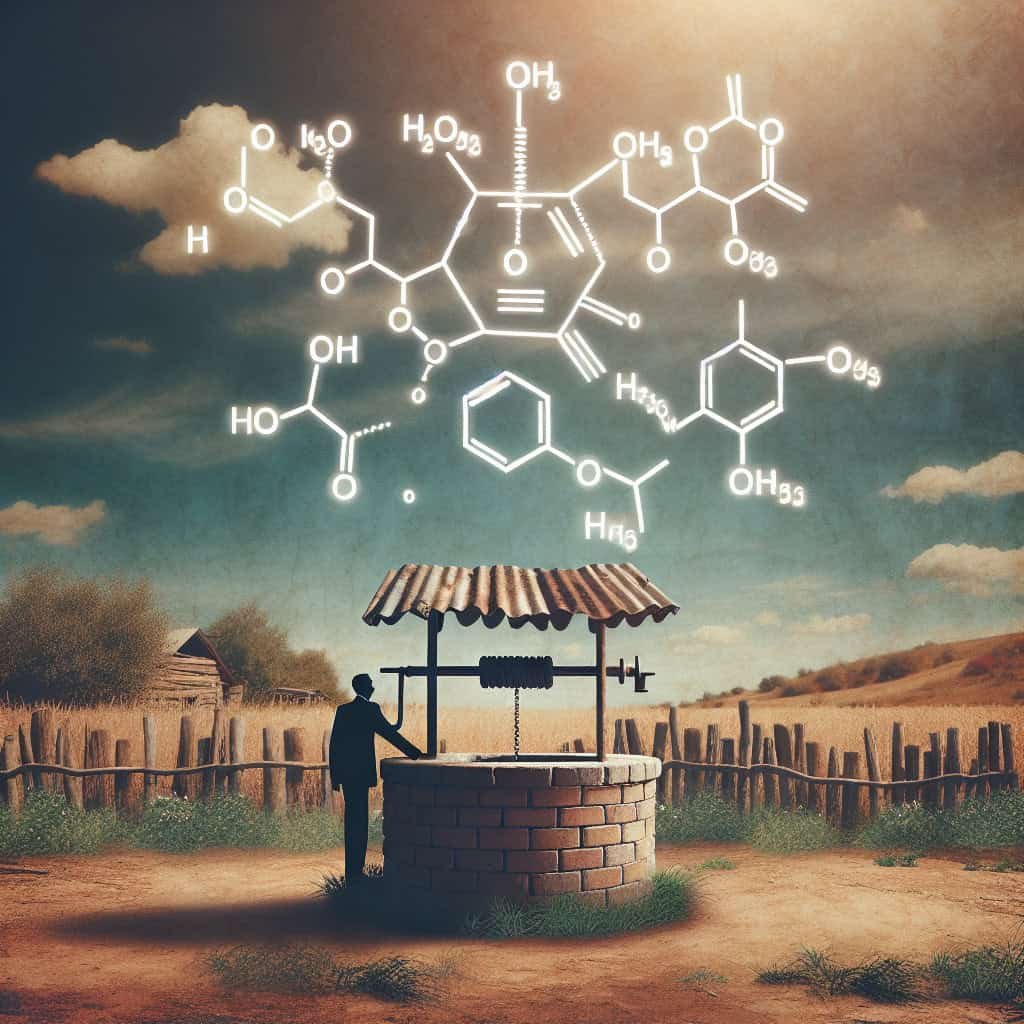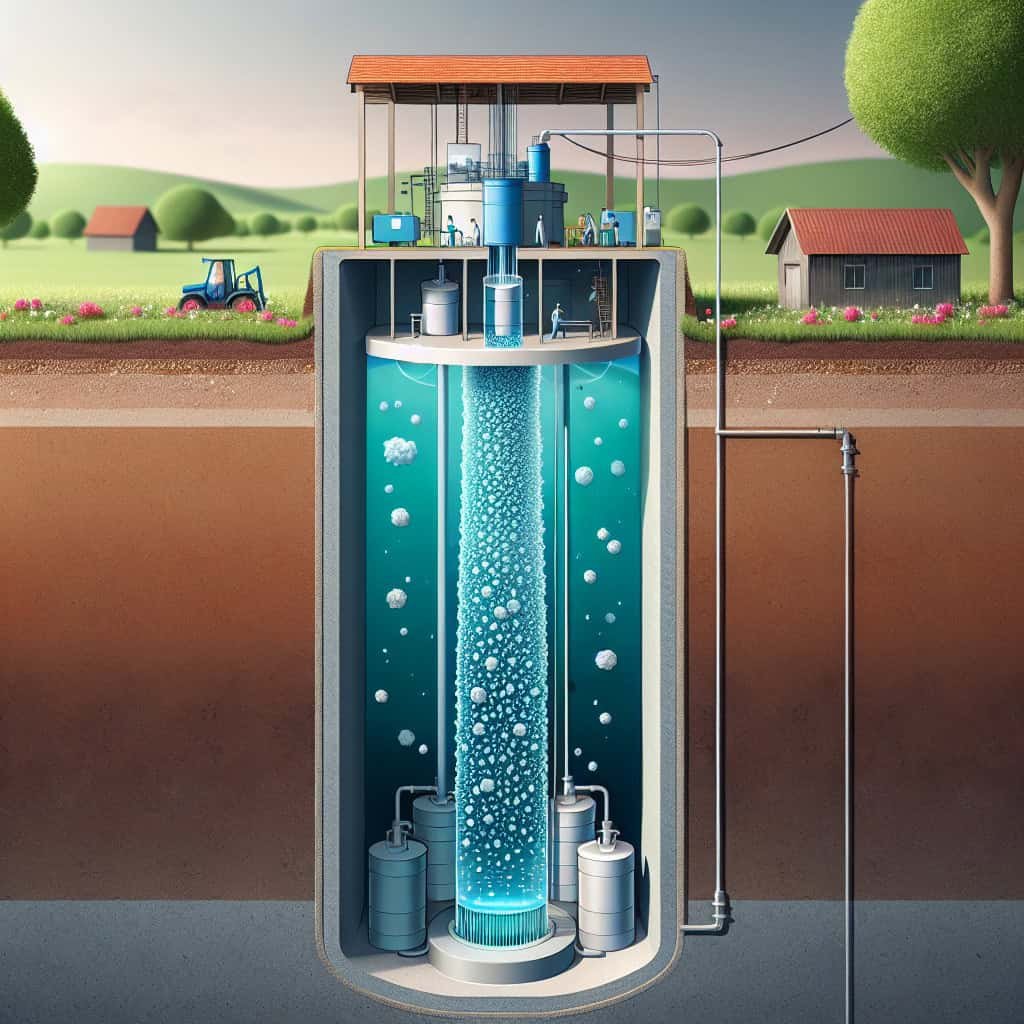Are you concerned about the presence of volatile organic compounds (VOCs) in your well water? If so, you’re not alone. Many homeowners like yourself are seeking effective solutions to address the issue. VOCs can pose potential health risks, so it’s important to take action. In this article, we will explore several practical methods that you can use to tackle VOCs in your well water. From filtration systems to regular testing, we will guide you through the steps necessary to ensure the safety and purity of your water supply.
Understanding VOCs in Well Water
What are Volatile Organic Compounds (VOCs)?
Volatile Organic Compounds (VOCs) are a group of carbon-based chemicals that easily evaporate and can be found in various products and substances. These compounds are released into the air from sources such as paints, cleaning products, fuels, and solvents. However, they can also contaminate well water through various means, posing potential health risks to those who consume it.
Sources of VOCs in Well Water
VOCs can enter well water through several sources, including industrial activities, agricultural practices, and residential activities. Industries that produce or use chemicals are a significant source of VOC contamination. These contaminants can seep into the ground and infiltrate water sources, including wells. Additionally, pesticides, fertilizers, and other agricultural chemicals can also contribute to VOC contamination in well water. Furthermore, improper handling and disposal of household chemicals, such as cleaning agents, paints, and automotive fluids, can contaminate groundwater and subsequently well water.
Health Risks Associated with VOCs in Well Water
Exposure to VOCs in well water can have adverse health effects. Some VOCs have been linked to short-term effects like headaches, dizziness, nausea, and eye irritation. Prolonged exposure to certain VOCs may lead to more serious health conditions, including damage to the liver, kidneys, and central nervous system. Additionally, certain VOCs have been associated with an increased risk of cancer when consumed over extended periods. It is essential to address VOC contamination in well water to safeguard the health and well-being of those who rely on it.
Testing for VOCs in Well Water
Reasons to Test for VOCs in Well Water
Regular testing for VOCs in well water is crucial to identify and monitor potential contamination. Testing allows you to determine the presence and concentration of VOCs in your water supply accurately. By understanding the level of contamination, you can take appropriate measures to address the issue and protect yourself and your family from potential health risks. Moreover, testing helps in evaluating the effectiveness of any treatment methods implemented and ensures ongoing water quality monitoring.
Types of VOCs to Test for
When testing for VOCs in well water, it is important to consider the various types of compounds that could be present. Common VOCs found in well water include benzene, toluene, ethylbenzene, and xylene (collectively referred to as BTEX). Other VOCs to test for include trichloroethylene (TCE), tetrachloroethylene (PCE), and vinyl chloride. These compounds can be harmful even at low concentrations, so it is essential to test for them to ensure your well water is safe to consume.
How to Conduct VOC Testing in Well Water
To conduct VOC testing in well water, it is recommended to contact a certified laboratory specializing in water testing. They will provide you with a sampling kit and detailed instructions on how to collect a representative water sample from your well. The collected sample is then sent to the laboratory for analysis. It is vital to follow the provided instructions carefully to obtain accurate and reliable test results. Once the analysis is complete, the laboratory will provide you with a report detailing the VOC levels detected in your well water.
Interpreting VOC Test Results
Interpreting VOC test results requires understanding the acceptable levels of each compound and their associated health risks. The laboratory report will typically indicate the detected concentration of each VOC and compare it to the applicable regulatory standards or guidelines. If the reported VOC levels exceed the recommended limits, it indicates contamination, and appropriate actions must be taken to address the issue. Consulting with a water treatment professional can help interpret the test results and guide you in developing an effective treatment plan.

Preventing VOC Contamination in Well Water
Identifying and Eliminating Potential VOC Sources
To prevent VOC contamination in well water, it is crucial to identify and eliminate potential sources of these compounds within your property. Inspect your surroundings for any leaking or improperly stored containers of chemicals, pesticides, or fuels. Address any leaks or spills promptly and store these substances in a secure, well-ventilated area away from your well. Additionally, ensure proper maintenance of any on-site septic systems and avoid using harsh chemicals near your well that can infiltrate the groundwater.
Proper Storage and Disposal of Household Chemicals
Proper storage and disposal of household chemicals are vital to prevent VOC contamination in well water. Ensure that all chemical products, such as cleaning agents, paints, and solvents, are stored in a secure place with tight lids to prevent leaks. Dispose of any unwanted or expired chemicals at designated collection centers or hazardous waste facilities in your community. Avoid pouring chemicals down the sink, toilet, or storm drains, as they can find their way into groundwater sources and ultimately contaminate your well water.
Avoiding or Minimizing VOCs from Building Materials
When constructing or renovating your home, it is important to choose building materials and products that minimize VOC emissions. Opt for low-VOC or VOC-free paints, adhesives, and sealants. Consider using natural or organic materials for flooring and furniture to reduce the presence of VOCs in your indoor environment. Proper ventilation during and after construction is also essential to minimize the accumulation of VOCs indoors.
Regular Maintenance of Septic Systems
If your property relies on a septic system for wastewater treatment, regular maintenance is crucial to prevent VOC contamination in well water. Inspect and pump your septic tank regularly to prevent any overflow or leakage of untreated wastewater into the groundwater. Follow recommended maintenance schedules and be mindful of the types of substances you dispose of down the drain to avoid introducing harmful chemicals into the septic system.
Protection of Well Water Sources
Protecting the sources of well water is essential to prevent VOC contamination. Ensure that your well is properly constructed, sealed, and located away from potential sources of contamination, such as septic systems, fuel tanks, or chemical storage areas. Regularly inspect the area surrounding your well for any signs of potential contamination, such as odors, discoloration, or pooling of liquids. Address any issues promptly to maintain the integrity of your well water source.
Treating VOCs in Well Water
Activated Carbon Filtration
Activated carbon filtration is a widely used method for treating VOCs in well water. The porous nature of activated carbon allows it to adsorb VOC molecules effectively, removing them from the water. This treatment method is particularly effective for removing organic compounds, including many VOCs. Regular replacement of the activated carbon filters is necessary to maintain their effectiveness.
Air Stripping
Air stripping involves exposing well water to air in a specially designed tower or tank, allowing the VOCs to evaporate from the water into the air. This process relies on the principle of VOC volatility, where the compounds preferentially transfer from the water to the air due to their higher vapor pressure. The stripped water is then treated further, if necessary, to ensure the removal of any remaining VOCs. Air stripping is an effective treatment method for high concentrations of VOCs.
Ozone Treatment
Ozone treatment is a powerful oxidation process used to remove VOCs from well water. Ozone gas is introduced into the water, where it reacts with the VOCs, breaking them down into harmless byproducts. This treatment method is effective in eliminating various organic compounds and has the added benefit of disinfecting the water by destroying bacteria and viruses. However, ozone systems require proper maintenance and monitoring to ensure their effectiveness.
Aeration
Aeration involves exposing well water to air, allowing VOCs to escape through volatilization. This process is typically achieved by introducing air bubbles into the water through diffusers or other aeration devices. As the water is agitated and comes in contact with the air, the VOCs are released and transferred out of the water. Aeration can be an effective treatment method for lower levels of VOC contamination.
Bacterial Biodegradation
Bacterial biodegradation is a natural process where specific types of microorganisms break down organic compounds, including VOCs, into harmless byproducts. This treatment method involves introducing specially selected bacteria into the well water, which then metabolize the VOCs, reducing their concentration over time. Bacterial biodegradation can be an effective treatment option for certain types of VOC contamination.
Chemical Oxidation
Chemical oxidation involves adding oxidizing agents, such as hydrogen peroxide or chlorine, to well water to facilitate the breakdown of VOCs into non-hazardous substances. The oxidizing agents react with the VOCs, either by directly oxidizing them or by producing reactive species that attack the contaminants. Chemical oxidation can be an effective treatment option for various types of VOC contamination, but it requires careful monitoring and control to avoid over-oxidation.
Advanced Oxidation Processes
Advanced oxidation processes (AOPs) are a combination of various treatment techniques that generate powerful oxidizing agents to degrade VOCs in well water. AOPs typically involve the use of ultraviolet (UV) light, hydrogen peroxide, and/or ozone to create reactive species that react with and break down the VOCs. AOPs are effective in treating complex mixtures of VOCs and can be tailored to specific contaminants for optimal results.
Reverse Osmosis
Reverse osmosis (RO) is a membrane-based treatment process used to remove a wide range of contaminants, including VOCs, from well water. Water is forced through a semipermeable membrane that filters out the VOC molecules, allowing only clean water to pass through. RO systems are highly effective in removing VOCs, but they may require pre-treatment to protect the membrane from fouling.
Distillation
Distillation is a process that involves heating well water to generate steam, which is then condensed to produce purified water. VOCs have higher boiling points than water, so they do not evaporate with the steam and are left behind in the distillation residue. This separation process effectively removes VOCs from the well water. However, distillation is energy-intensive and may not be suitable for large-scale treatment.
Resin Adsorption
Resin adsorption involves passing well water through a bed of specialized resin beads that selectively adsorb VOC molecules. The resin beads have a high affinity for organic compounds and effectively remove them from the water. Over time, the resin becomes saturated with the VOCs and requires regeneration or replacement. Resin adsorption is a reliable treatment method for VOC removal, particularly for low to moderate VOC concentrations.

Considering Professional Help
When to Seek Professional Assistance
While there are various treatment options available, it is important to consider seeking professional assistance when addressing VOC contamination in well water. Professional water treatment experts can assess the specific characteristics of your well water and recommend the most suitable treatment methods. It is particularly important to seek professional help when dealing with high levels of VOC contamination or when multiple treatment techniques may be required.
Choosing a Certified Water Treatment Professional
When choosing a certified water treatment professional, it is essential to ensure they have the necessary expertise and experience in treating VOC contamination in well water. Look for professionals who are certified by reputable organizations and have a proven track record in addressing similar issues. Additionally, consider seeking recommendations from trusted sources or consulting local health departments for referrals to reputable professionals in your area.
Evaluating Treatment Options and Costs
Working with a water treatment professional will help you evaluate the best treatment options for your specific situation. They can assess the VOC levels in your well water, consider the required flow rates, and determine the appropriate treatment methods based on your budget and preferences. A thorough evaluation of treatment options and their associated costs will help you make an informed decision on the most effective and feasible solution for your well water.
Maintenance Considerations
When implementing a treatment system for VOC removal, it is important to consider the maintenance requirements. Different treatment methods have varying maintenance needs, including regular filter replacement, chemical replenishment, and system monitoring. Discuss maintenance considerations with your chosen water treatment professional to ensure you are prepared to fulfill the necessary upkeep for the selected treatment system.
Monitoring and Maintenance
Regular Water Quality Testing
Regular water quality testing is essential even after implementing a treatment system for VOC removal. Periodic testing helps ensure the effectiveness of the treatment method and confirms that the VOC levels in your well water remain within acceptable limits. Follow the recommended testing schedule provided by the water treatment professional and contact them if you notice any changes in water quality or suspect a potential issue.
Periodic Inspection and Maintenance of Treatment Systems
Periodic inspection and maintenance of treatment systems are vital to ensure their continued performance. Regularly inspect the treatment equipment for any signs of wear or damage and address any issues promptly. Follow the maintenance guidelines provided by the water treatment professional, which may include tasks such as filter cleaning or replacement, system disinfection, or equipment calibration.
Replacing Filters and Media
If your treatment system incorporates filtration or adsorption media, it is important to replace these components as recommended by the manufacturer or water treatment professional. Over time, the filtration media can become saturated or clogged with contaminants, reducing their effectiveness in removing VOCs. Regular replacement of filters and media will ensure optimal performance and maintain the quality of treated well water.
Following Manufacturer Guidelines
Follow the manufacturer’s guidelines for any treatment equipment or systems installed in your well water setup. This includes adhering to recommended maintenance schedules, conducting any necessary testing or inspections, and using appropriate cleaning or disinfection procedures. By following the manufacturer’s guidelines, you can ensure the longevity and performance of your treatment system while maintaining safe well water.

Regulations and Standards
National Drinking Water Standards for VOCs
The U.S. Environmental Protection Agency (EPA) sets national drinking water standards, known as Maximum Contaminant Levels (MCLs), for various contaminants, including VOCs. These MCLs represent the maximum permissible concentrations of contaminants in public drinking water supplies. The EPA has established MCLs for several VOCs commonly found in well water, such as benzene, toluene, ethylbenzene, and xylene. It is essential to compare your well water test results with these standards to evaluate the level of contamination and determine the necessary actions.
State and Local Regulations
In addition to national standards, states and local jurisdictions may have their own regulations and standards governing well water quality. Some states may have stricter requirements than the national standards, while others may have additional contaminants of concern that are specific to the region. It is important to familiarize yourself with the applicable regulations in your area and ensure compliance with the specific requirements for VOCs in well water.
Compliance and Legal Requirements
Compliance with drinking water regulations and legal requirements related to VOCs in well water is crucial to ensure the safety and well-being of consumers. Non-compliance with applicable standards may have legal consequences and pose potential health risks to individuals relying on the contaminated well water. If you find that your well water exceeds the permissible VOC levels, it is important to take immediate action to address the issue and bring your water supply into compliance with the relevant regulations.
Educating Yourself and Others
Researching VOCs in Well Water
Educating yourself about VOCs in well water is an essential step in understanding the potential risks and available solutions. Conduct thorough research on the sources, health effects, and treatment methods related to VOC contamination. Seek information from reliable sources, such as government agencies, academic institutions, and reputable water treatment organizations. By staying informed, you can make informed decisions and take appropriate actions to ensure the safety of your well water.
Understanding Treatment Options
Developing an understanding of the different treatment options available for addressing VOC contamination in well water is vital. Research various treatment methods and their effectiveness in removing VOCs. Consider the specific characteristics of your well water, such as VOC concentrations and flow rates, when evaluating treatment options. Engage in discussions with water treatment professionals to gain further insights into the best treatment methods for your situation.
Promoting Well Water Safety in Your Community
Educating others in your community about well water safety and the risks associated with VOC contamination is a proactive step towards promoting the well-being of everyone. Share your knowledge and experiences by organizing educational events or distributing informational materials. Encourage others to conduct regular testing, address potential sources of contamination, and seek professional help when needed. By working together, you can create a safer environment for well water consumption in your community.

Funding and Assistance Programs
Government Grants and Loans
Government grants and loans can provide financial assistance for addressing VOC contamination in well water. Various federal, state, and local programs offer funding opportunities aimed at improving water quality and well water safety. Research available government grants and loans specific to your region and explore the eligibility criteria and application process. These funding programs can help with the costs associated with testing, treatment system installation, or making necessary improvements to protect your well water.
Non-Profit Organizations
Non-profit organizations dedicated to water quality and well-being may offer assistance programs for individuals facing VOC contamination in well water. These organizations often provide resources, educational materials, and even financial support to help individuals and communities in need. Reach out to non-profit organizations in your area that focus on water-related issues to inquire about available assistance programs or resources they provide.
Community Initiatives
In some cases, communities come together to tackle water quality challenges collectively. Community initiatives can involve collaborative efforts to address VOC contamination, such as sharing resources, organizing group testing events, or establishing group treatment systems. By pooling resources and knowledge, communities can make well water safety a shared responsibility and work towards ensuring access to clean and healthy water for all community members.
Conclusion
Taking action to address VOC contamination in your well water is of utmost importance to safeguard the health and well-being of yourself and your family. Understanding the sources, health risks, and treatment options related to VOCs in well water is crucial in developing an effective plan. Regular testing, proper maintenance, and compliance with regulations and standards are essential steps in ensuring the safety of your water supply. By educating yourself and others, seeking professional assistance when needed, and exploring available funding and assistance programs, you can take proactive measures to address VOC contamination and enjoy safe well water for years to come.


